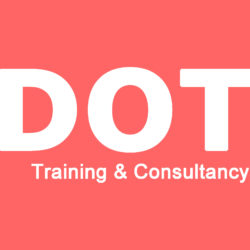甚麼是戲劇及形體動作治療?
由戲劇治療師帶領組員建立一個安全的環境,在信任與接納的氣氛下,以戲劇形式,透過角色扮演、形體動作、聲音及對話,讓參與者能自然情感流露,表達內在需要及釋放壓抑的情緒如恐懼、憂慮及挫折感等,帶來治療及成長果效。
每節均設熱 身、主要活動及總結,形式包括說故事、聽音樂、角色扮演、身體 舞動、聲音/眼神/身體接觸及交流分享等。
What is Drama and Movement Therapy?
Facilitate by a professionally trained drama therapist, to use drama and movement in a safe environment, and to enable people to find ways of expressing their needs, fears, anxieties and frustrations spontaneously and naturally.
Each session is structured through a warm-up, main event and grounding. A session may be story- or movement-based. The therapy “toolkit” includes drama, myths, voice, relaxation, movement-with-touch, instruments, music and sound – and feedback.
甚麼是芝麻模式?
戲劇及形體動作治療(芝麻模式Sesame Approach)以「芝麻開門」的象徵符號,喻意打開心靈健康之門,開啓內在生命寶庫。此模式由容格(Carl Jung)分析心理學、拉邦(Rudolf Laban) 舞蹈理論、史萊德 (Peter Slade) 兒童戲劇及神話學之象徵符號發展出來。
此治療模式著重以象徵及比喻的手法,引發創意與想像,透過説故事、畫圖畫、身體隨著音樂舞動,聲音創意表達,接觸自 我內在潛意識。學員毋須直接分享個人困惑,可選擇以藝術形式表達自我,較容易釋去恐懼,啟發潛能,轉危為機,建立更整全的人生。
What is Sesame Approach?
Sesame is a holistic approach to Dramatherapy. The Sesame approach incorporates the therapeutic use of Movement Observation developed by Rudolf Laban, the importance of play discovered by Peter Slade and the enactment of symbolic Myth based on Carl Jung’s concepts of the unconscious.
The Sesame Approach uses drama and movement to promote healing and change. It is a non-confrontational approach, based in the knowledge that difficulties can be revealed through metaphor. It is a symbolic and indirect approach placing emphasis on the creative and expressive use of the imagination within the safety and containment of the art forms.
誰是戲劇治療的服務對象?
治療內容會按參與者的需要而設計,故適合任何人士參與,個人或小組形式均可。除了可以應用於個人心理成長及性格塑造外,當中的戲劇元素及溝通技巧更可作為企業培訓之用,如企業文化及核心價值的培育,團隊建立及客戶服務管理等。
一般人士如辦公室各階層、學生、中年人士及老年人均適合進行戲劇及形體動作治療。如以戲劇治療達致個別針對性治療效果,有特別需要的人士如自閉症患者、受暴力或性侵犯兒童、精神病患者、嚴重學習障礙人士及老年期癡呆症患者等同樣適用。
治療目的乃期望透過藝術媒介,使參與者擴闊生命的體驗,以創意方式達致個人成長及轉變。
Whom do we work with?
Drama and Movement Therapy sessions can be adapted to all age groups, with different social backgrounds. The therapeutic aims can meet the needs of many different clients from children to old people, from students to corporation.
For corporate training, the drama elements and communication skills can be applied in the development of corporate values, team building exercises, customer service training, etc. For therapeutic purpose, people with mental health problems, learning disabilities, those living with autistic tendencies, children who have been sexually abused and elderly with dementia are suitable for receiving drama therapy.
The art form is used to facilitate a fuller experience of life and living, and open up individual potential for creative growth and change.
![]()
